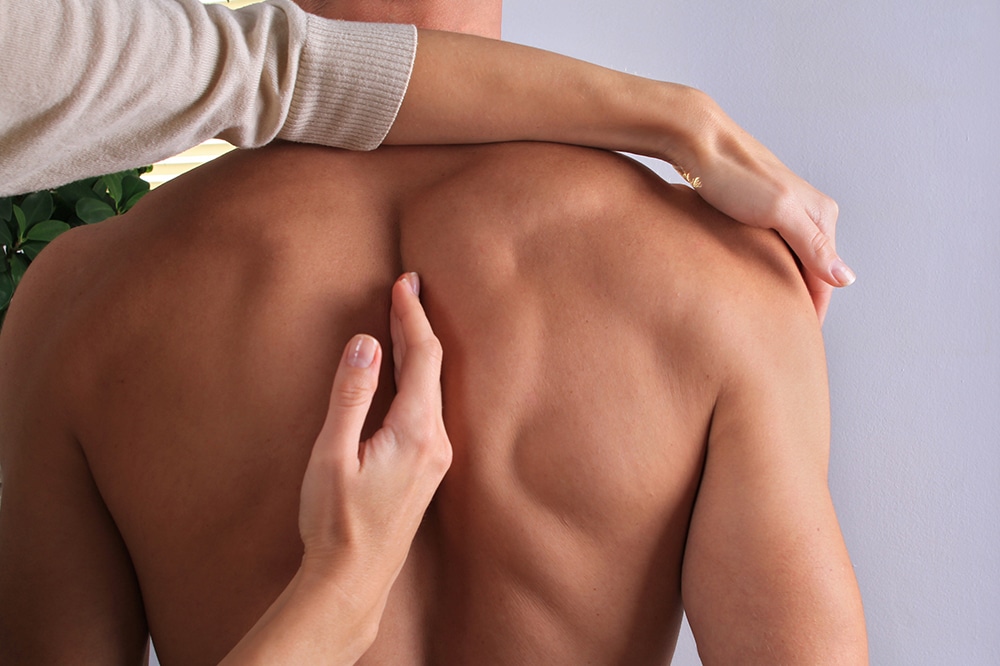
Non-Operative Treatment Options For Scoliosis: Physical Therapy & Schroth Method
Typically affecting 2% of the population, scoliosis is a common diagnosis among children aged 9-17. While the specific cause of scoliosis is idiopathic, or unknown, it is typically noted beginning at 10 years of age when growth spurts begin prior to puberty. The treatment of scoliosis is determined by the severity of the curve and is determined on a case by case basis. While there is no ‘standard treatment’, a combination of exercise such as bracing, postural retraining, and the Schroth Method have been noted to be effective.
Bracing
For a curvature between 25 degrees and 40 degrees a back brace is used along with physical therapy interventions with reexaminations done every four to six months to monitor the curvature.
Postural Retraining
Optimum posture is key for the stabilization and correction of the spine, and must not only be achieved through exercise, but incorporated into daily activities. Maintaining proper posture helps to reduce the advancement of ‘C” shaped and “S” shaped curves affiliated with scoliosis. The most important element during postural correction is the upward direction or elongation towards the head.
It is important to remember when doing these exercises, however, to avoid advancing one of the curves, while attempting to correct the other. This is why seeking guidance from a skilled physical therapist is very important. Physical therapy interventions for patients with scoliosis are designed to halt the progression of the curvature and lengthen the spine. In a patient with scoliosis with muscular imbalances (or muscular weakness), asymmetrical loads to the spine can only continue to make the curvature worse; therefore, it is important to begin a treatment plan early.
Schroth Method
The Schroth Method {developed in Germany nearly 100 years ago} recognizes that scoliosis requires a correction of a three dimensional occurrence including bending side to side, bending forward and backward, and rotation. The Schroth Method incorporates therapeutic procedures to help decrease rotation of the spine, through reversing the rotation of the ribs. Additionally, specific techniques in breathing are utilized to assist in the correction of the spine. The Schroth Method and physical therapy interventions place great emphasis on postural correction during a patient’s activities of daily living, not just in specific therapeutic or Schroth based exercises. It is important the patient learns what he or she has to do in order to reverse and control the abnormal posture so improved patterns and posture become habit. The Schroth Method uses the principle of pelvic corrections to assist in the elongation of the spine. It is important to note that therapeutic intervention, for patients with scoliosis take patience, dedication, and repetition.
Physical therapy can be beneficial to patients with scoliosis by focusing on the following principles:
- Elongation of the muscles that are responsible for compressing and shortening the spine.
- Strengthen the muscles that are weak and failing to support the spine in proper posture.
- Enhance the patient’s aerobic capacity: Patients suffering from scoliosis often have inhibited breathing patterns and reduced oxygen capacity as a result of their spinal deformity. It is a critical part of any physical therapy program to include aerobic conditioning, breathing exercise, and soft tissue mobilization to enhance their patient’s ability to meet the aerobic demands of their sports or ADLs (actives of daily life).
The therapists at VSI Physical Therapy have extensive experience in the treatment of scoliosis. We follow principles of treatment that have been shown to be effective in the treatment of scoliosis as instructed by The Scroth Method. If you are suffering from pain or concerned if you are doing enough to treat your spinal condition, schedule today so we can help you improve your life!
Topics covered
About the Author
Featured Resources
Insights to Achieve a Pain-Free Life



